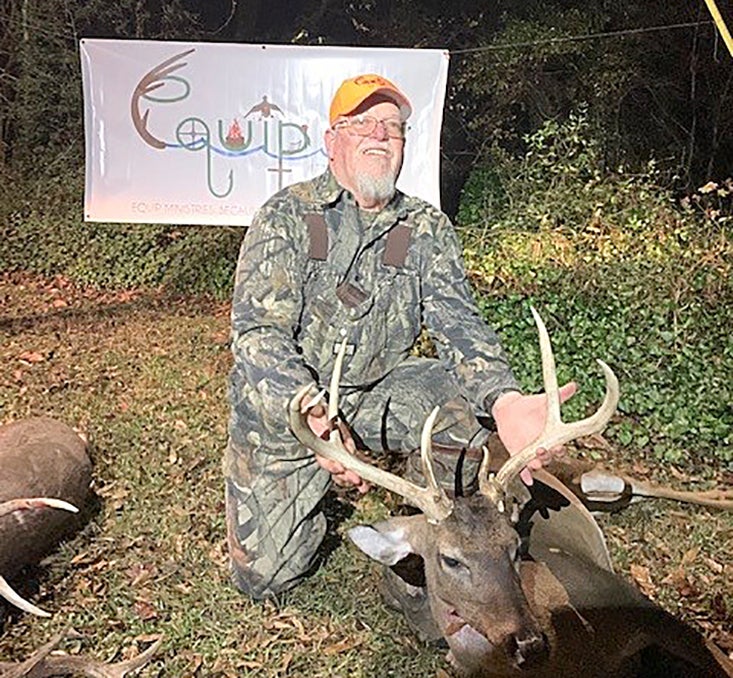By DAVID RAINER, Alabama Department of Conservation and Natural Resources
Matt Kelley and his hunting companions were celebrating the harvest of an 8-point by one of the group, but they were in for a surprise when the whitetail was hoisted on the skinning rack.
The deer had no visible male reproductive organs, only female.
Kelley holds fund-raising deer hunts in Sumter and Greene counties for his Equip Ministries, a substance abuse prevention ministry with a focus on the outdoors.
“On one of our hunts, we took five bucks, and one of them was (what they thought) was a nice, wide 8-point,” Kelley said. “We took pictures and got him back to the skinning shed. I said something about the tarsal glands not even being black; it’s not even rutting. Somebody else said something about how skinny his neck was.
“Then the guy who shot it was starting to skin it and said, ‘Boys, this is a doe.’”
Kelley, who hosts the Equip Outdoors Radio Show and Podcast, said the deer weighed 175 pounds with eight scorable points, including two kickers on the base of one antler. The deer was taken in Sumter County just across the Tombigbee River from Marengo County.
“What was more crazy was the guy who shot it said the deer was actually not chasing a doe but walking behind it,” he said. “The doe urinated and this deer lip-curled just like a buck would. The landowner has had this land all his life, and they’ve never killed one like it his whole life. It’s a significant rack for a buck. If you looked at it, you would say this one was a shooter.”
Chris Cook, the Alabama Wildlife and Freshwater Fisheries (WFF) Division’s Deer Program Coordinator, said the 8-point taken by Kelley’s group was what wildlife biologists call a pseudohermaphrodite.
“A deer like this with hardened antlers will have testes inside the body cavity,” Cook said. “They don’t have fully developed male or female organs. They may have external female organs, but they would have to have underdeveloped testes that were still large enough to produce enough testosterone to have that antler growth. While it may look like a doe on the outside, it’s not truly a doe. But it’s not a buck either. It’s very unusual for a functioning female to have antlers like that.”
Cook said the percentage of true does with antlers is only about 0.1% of the population. These does are fully functional females but have small, velvet-covered antlers, not fully developed, hardened antlers. He said does produce a small amount of testosterone from their ovaries but not enough to produce hardened antlers.
“I’ve seen a few over the years that looked like does externally that had antlers,” he said. “But it’s not physically possible to do that and be fully functional does. I’ll get reports about a few each year in Alabama. The ones I usually hear about are the ones with fully developed antlers but are still covered in velvet. They have enough testosterone to start the antler growth but not enough to complete the cycle.”









